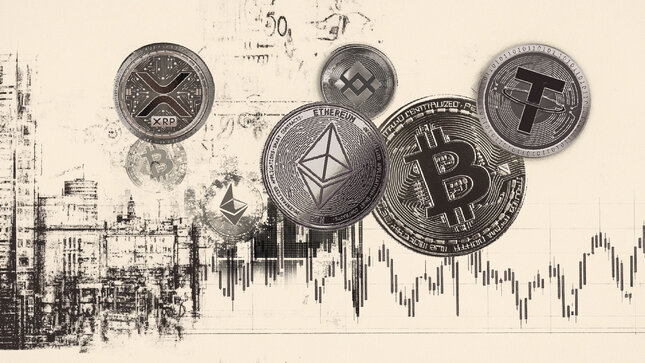- Australian Dollar weakens on fears of a credit crunch in the Chinese property sector.
- Hawkish commentary from the Governor of the RBA, Philip Lowe, temporarily staunches the bleeding.
- US factory gate inflation comes out higher than expected, however, supporting the US Dollar.
The Australian Dollar (AUD) trades lower against the US Dollar (USD) after selling-off during the Asian session on fears of a credit crunch in the Chinese property sector triggered by the default of a private property developer, Country Garden.
The Aussie Dollar comes under further pressure following the release of higher-than-expected US factory gate inflation with the release of Producer Price Index data (PPI) for July. This increases the probability that the Federal Reserve (Fed) may hike interest rates again, strengthening the US Dollar.
AUD/USD trades in the 0.64s during the US session.
Australian Dollar news and market movers
- The Australian Dollar reverses the substantial gains made on Thursday as a result of positive market sentiment and a weaker US Dollar, caused by the release of lower-than-expected US inflation data for July.
- Fresh China economy woes may have contributed to the Australian Dollar’s turn lower.
- During Friday’s Asian session, the news surfaced that Chinese private property developer Country Garden defaulted on its debt, spreading fear of a meltdown in the country’s fragile property sector.
- Given Australia’s reliance on exporting raw materials such as Iron Ore for Chinese building projects, the news weighed heavily on the Australian Dollar.
- The Aussie found support during the Asian session after comments from Governor Lowe that the market interpreted as hawkish and, therefore, positive for AUD. Lowe reiterated the Reserve Bank of Australia’s (RBA) commitment to fighting inflation and did not rule out the need for further rate hikes.
- Headline PPI shows a 0.8% rise in July YoY versus the 0.7% forecast and 0.3% MoM versus the 0.2% anticipated.
- Core PPI shows a 2.4% rise versus the 2.3% YoY forecast, and 0.3% against the 0.2% estimated on a MoM basis.
Australian Dollar technical analysis
AUD/USD is in a sideways trend on both the long and medium-term charts. The February high at 0.7158 is a key hurdle, which if vaulted, will give the longer-term charts a more bullish tone.
The 0.6458 low established in June is a key level for bears. If this is breached decisively, it would color the charts more bearish. Price is currently closer to this key low.
Australian Dollar vs US Dollar: Weekly Chart
Price has now broken cleanly below the confluence of moving averages (MA) close to 0.6700, made up of most of the major SMAs – the 50-week, 50-day and 100-day. The breaching of this key support and resistance level was a bearish sign.
Australian Dollar vs US Dollar: Daily Chart
AUD/USD has broken below the 0.6600 June lows, and a continuation down to the key May lows at 0.6460, is quite possible. A decisive break below them would open the way for a move down to 0.6170 and the 2022 lows.
Because the pair is in a sideways trend overall, it is unpredictable, and the probabilities do not favor either bears or bulls overall – nor is the Relative Strength Index (RSI) providing much insight on either timeframe.
For bulls, a decisive break back above the skein of MAs in the upper 0.66s and then through 0.6750 would be a prerequisite for a more optimistic outlook.
In technical terms, a ‘decisive break’ consists of a long daily candlestick, which pierces cleanly above or below the critical level in question and then closes near to the high or low of the day. It can also mean three up or down days in a row that break cleanly above or below the level, with the final day closing near its high or low and a decent distance away from the level.
Inflation FAQs
What is inflation?
Inflation measures the rise in the price of a representative basket of goods and services. Headline inflation is usually expressed as a percentage change on a month-on-month (MoM) and year-on-year (YoY) basis. Core inflation excludes more volatile elements such as food and fuel which can fluctuate because of geopolitical and seasonal factors. Core inflation is the figure economists focus on and is the level targeted by central banks, which are mandated to keep inflation at a manageable level, usually around 2%.
What is the Consumer Price Index (CPI)?
The Consumer Price Index (CPI) measures the change in prices of a basket of goods and services over a period of time. It is usually expressed as a percentage change on a month-on-month (MoM) and year-on-year (YoY) basis. Core CPI is the figure targeted by central banks as it excludes volatile food and fuel inputs. When Core CPI rises above 2% it usually results in higher interest rates and vice versa when it falls below 2%. Since higher interest rates are positive for a currency, higher inflation usually results in a stronger currency. The opposite is true when inflation falls.
What is the impact of inflation on foreign exchange?
Although it may seem counter-intuitive, high inflation in a country pushes up the value of its currency and vice versa for lower inflation. This is because the central bank will normally raise interest rates to combat the higher inflation, which attract more global capital inflows from investors looking for a lucrative place to park their money.
How does inflation influence the price of Gold?
Formerly, Gold was the asset investors turned to in times of high inflation because it preserved its value, and whilst investors will often still buy Gold for its safe-haven properties in times of extreme market turmoil, this is not the case most of the time. This is because when inflation is high, central banks will put up interest rates to combat it.
Higher interest rates are negative for Gold because they increase the opportunity-cost of holding Gold vis-a-vis an interest-bearing asset or placing the money in a cash deposit account. On the flipside, lower inflation tends to be positive for Gold as it brings interest rates down, making the bright metal a more viable investment alternative.
Information on these pages contains forward-looking statements that involve risks and uncertainties. Markets and instruments profiled on this page are for informational purposes only and should not in any way come across as a recommendation to buy or sell in these assets. You should do your own thorough research before making any investment decisions. FXStreet does not in any way guarantee that this information is free from mistakes, errors, or material misstatements. It also does not guarantee that this information is of a timely nature. Investing in Open Markets involves a great deal of risk, including the loss of all or a portion of your investment, as well as emotional distress. All risks, losses and costs associated with investing, including total loss of principal, are your responsibility. The views and opinions expressed in this article are those of the authors and do not necessarily reflect the official policy or position of FXStreet nor its advertisers. The author will not be held responsible for information that is found at the end of links posted on this page.
If not otherwise explicitly mentioned in the body of the article, at the time of writing, the author has no position in any stock mentioned in this article and no business relationship with any company mentioned. The author has not received compensation for writing this article, other than from FXStreet.
FXStreet and the author do not provide personalized recommendations. The author makes no representations as to the accuracy, completeness, or suitability of this information. FXStreet and the author will not be liable for any errors, omissions or any losses, injuries or damages arising from this information and its display or use. Errors and omissions excepted.
The author and FXStreet are not registered investment advisors and nothing in this article is intended to be investment advice.
Recommended content
Editors’ Picks

AUD/USD: Bullish outlook seen above the 200-day SMA
AUD/USD added to Friday’s advance and came just pips away from the key 0.6500 barrier on the back of the continuation of the selling pressure in the US Dollar and renewed trade concerns.

EUR/USD looks supported just below 1.1300
EUR/USD managed to extend its bounce off last week’s troughs, advancing for the second day in a row in response to the extra downward trend in the Greenback and a broad-based risk-on sentiment among traders.

Gold moves in a consolidative fashion above $3,300
Gold adds to Friday’s advance, reclaiming the $3,300 mark per troy ounce and beyond on the back of rising safe-haven demand following heightened geopolitical tensions in the Middle East. In addition, a persistent uncertainty over US trade policy continues to linger, adding to the upside momentum in the precious metal.

Crypto Today: BTC price stumbles below $94K, SUI surges as Trump hints at Hollywood tariffs
Cryptocurrency market capitalization settled at $3.1 trillion on Monday, dipping 3% with outflows exceeding $100 billion in the last 24 hours.

Has the tariff pain peaked?
Tariff rates may have peaked, but uncertainty hasn’t: Markets may be breathing easier, but investors should not mistake easing conditions for resolution. Even if headline tariff rates stay put, the real risk lies in prolonged policy unpredictability.

The Best brokers to trade EUR/USD
SPONSORED Discover the top brokers for trading EUR/USD in 2025. Our list features brokers with competitive spreads, fast execution, and powerful platforms. Whether you're a beginner or an expert, find the right partner to navigate the dynamic Forex market.
-638273549308493818.png)
-638273549724929664.png)


